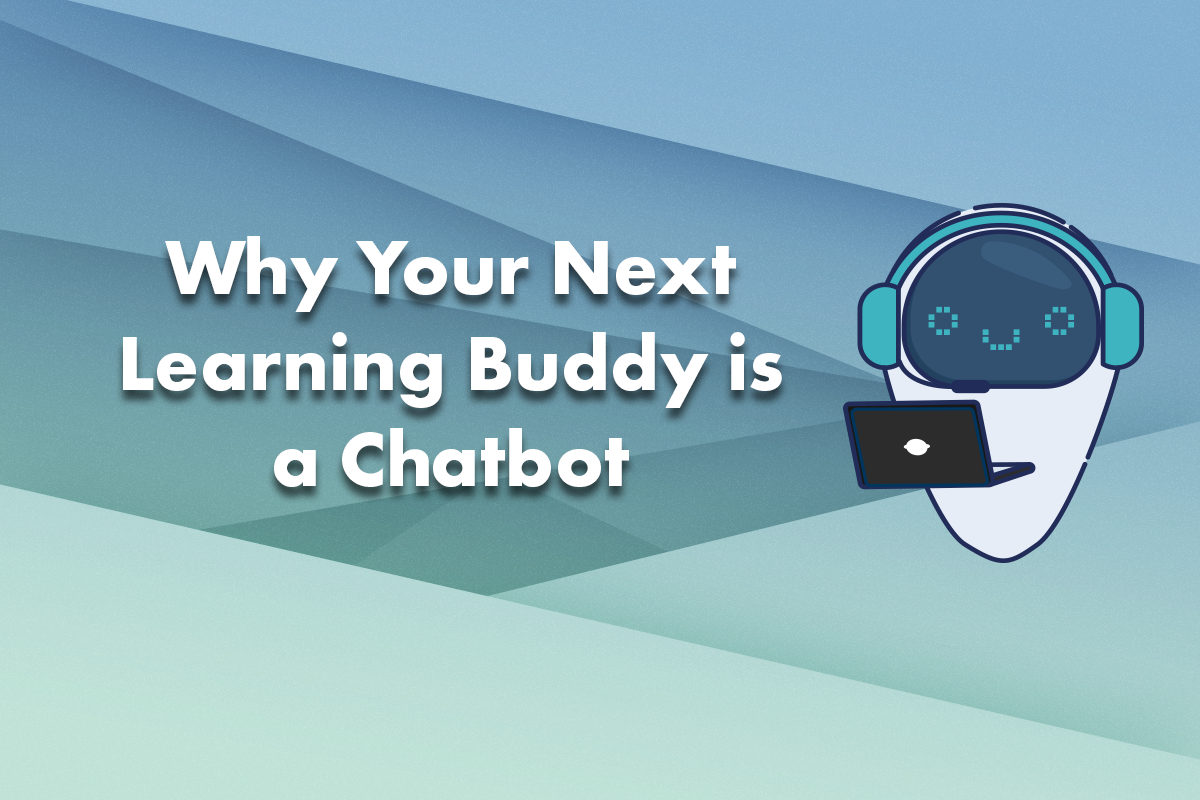By 2020, the average person will have more conversations with bots than with their spouse.
From answering frequently asked questions to ordering pizza, chatbots are everywhere. Chatbots are efficient and provide much convenience for consumers. You probably talk to a chatbot at least once a day on your mobile device, asking for directions or setting a reminder for an event. Chatbots have become a part of our daily lives and they are already game changers in many industries such as healthcare, customer service and finance industries. They also have the potential to transform the education industry, including the way we learn. Could your next learning buddy be a chatbot?
Imagine walking into a museum and having no human tour guides to show you around. Instead, your companion for the museum tour would be a chatbot application on your phone. This is already a reality in some museums around the world. As you walk through the museum, you can ask the bot to provide more information on the exhibit you are looking at. Museums are using chatbots to increase engagement with their visitors. Compared to guided tours by a human agent, chatbots can personalise the learning experience for each individual and tailor it based on their preferences. This is particularly useful for tourists when they are in a foreign country and when English may not be their first language, chatbots could converse with them in their native language and retain their attention in learning about local culture. Chatbots allow visitors to tour the premises at their own pace and answer questions about items on display with instantaneous replies.
What about the workplace? What happens if you are new to the company but have a pressing issue to resolve? Your mentor is stuck in a meeting and you feel awkward having to approach your other colleagues. Talking to a chatbot might just be the solution for you. Some companies have started implementing the use of chatbots for on-boarding processes, HR issues and job-related operations. For instance, if you are unsure about the procedures of submitting a tender for a project, you could chat with your company chatbot to find out the tender process in a matter of seconds. This is a good example of learning at the point of need. For many years, learning has been built on a model of “learn now, use later”. Content is delivered to learners “just in case” they might have a need for it in the future. But much of what learners takes in using the old approach is forgotten unless it is put into practice. In the case of chatbots, they help learners to learn and apply the knowledge in a practical way and better retain the information learned. Think about what happens if there is an incident at work that requires your urgent attention? A scenario involving a chemical reaction at a laboratory on an injured employee requires immediate attention. A colleague can use a smart camera to scan the chemical bottle and a chatbot can pull up the relevant first-aid information specific to that chemical. The chatbot could voice out a step-by-step procedure on short-term relief or alleviation of injury before medical help arrives. Having access to such information in times of emergency could make a difference in saving lives.
With students taking to technology very quickly these days, interacting with chatbots can enhance their learning experience too. There are already various education chatbots that communicate with students on a wide range of topics – language, science, mathematics, etc. Research suggests that digital learning retention rates are up to 60 percent higher compared to face-to-face retention rates. This implies that technology should supplement traditional teaching methods to enrich the learning journey for students. For instance, chatbots in language learning can facilitate student engagement. When learning any language, deliberate practice is necessary and valuable for the learner. Chatbots can help you practice your language skills without the intimidation and awkwardness of conversing with a real human being. It is also convenient and allows learners to get conversation practice anytime and anywhere. Furthermore, chatbots allows for personalised learning as it can create a tailored learning path for learners of different proficiencies in the language. Advanced learners can practise conversations in real life situations while learners at lower levels of proficiency can benefit from practising and reviewing vocabulary and grammar structures. Unlike humans, chatbots will never get bored of repeating or lose their patience with slower learners. This boosts students’ confidence and help them cope with learning based on their needs.
Whether it is for work, formal education or leisure, chatbots have great potential to transform the learning industry. A well-designed chatbot can deliver a game-changing learning experience to sustain interest, maintain engagement and drive better outcomes in knowledge and skills retention. The next time you think of training, consider using chatbots as your learning buddy and take learning to a whole new level.
Want to learn with a chatbot? Click here now!
We hope that this article is helpful. Do you have any tips you would like to add?
Let us know in the comments and please share this post with a friend/colleague if you enjoyed it!
